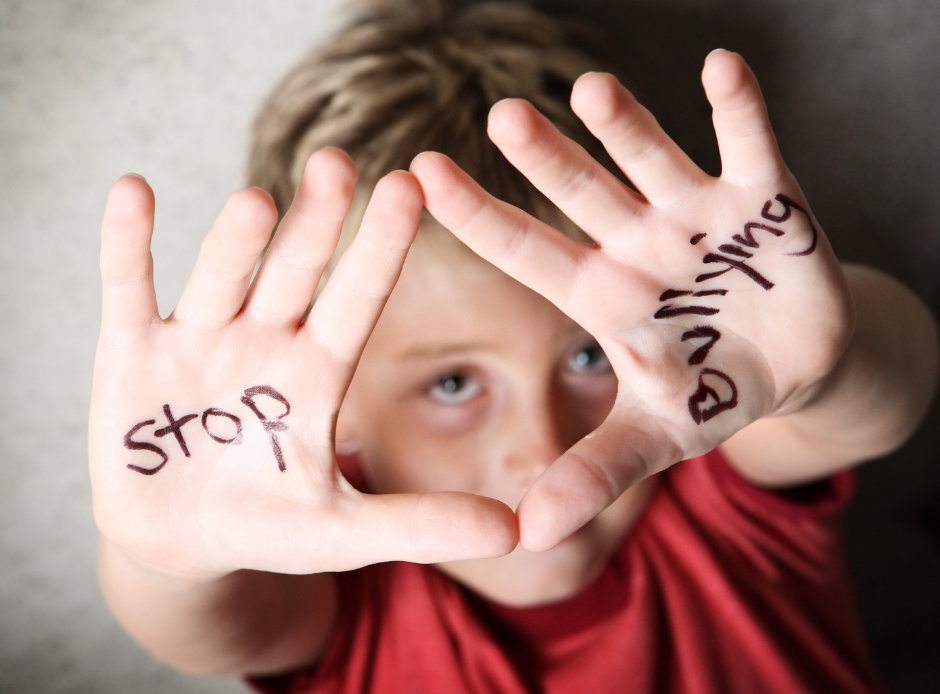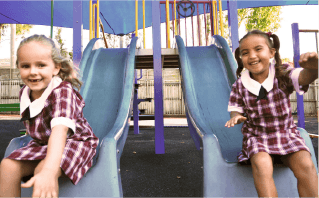
Bullying is a serious issue that can have lasting negative effects on children. It’s important for parents to be able to spot bullying and take steps to protect their child. This article will discuss what bullying is, how to recognise it, and what steps you can take to help your child.
When is it Bullying?
Bullying used to be a middle school problem, but it is now becoming apparent in earlier grades.
Most kids get teased by a sibling or a friend. And it’s not usually harmful when done in a playful, friendly, mutual way; and both kids find it funny. But when teasing becomes hurtful, unkind, and constant, it crosses the line into bullying and needs to stop.
Bullying is intentional tormenting in physical, verbal, or psychological ways. It can range from hitting, shoving, name-calling, threats and mocking, to extorting money and possessions. Some kids bully by shunning others and spreading rumours about them.
The increased use of social media is another vehicle for bullies to reach our children. Inappropriate behaviour between kids can occur outside of school via emails, text messages, and social media posts. These exchanges, known as cyberbullying, can be particularly hurtful and aggressive. Their harmful effects are often brought back into school the next day (we will discuss cyberbullying in our next newsletter).
Regardless of what type of bullying your child has been experiencing, it is essential to take it seriously because it affects kids’ sense of safety and self-worth, and can lead to extremely dangerous behaviours, such as self-harm and suicide attempts.
How do I know if my child is being bullied?
Unless your child tells you about bullying or has visible bruises or injuries, it can be hard to know if it’s happening.
But there are some warning signs. Parents might notice kids:
- Acting differently or seeming anxious
- Not eating or sleeping well, or not doing the things they usually enjoy
- Seem moodier or more easily upset than usual
- Avoiding certain situations (like taking the bus to school)
If you suspect bullying, but your child is reluctant to open up, find alternate ways to bring up the issue. For example, you might see a situation on a TV show and say, “Oh, that was mean, what would you do if that happened to you?” or “What do you think that person should have done?”. Sharing your experience when you were at school can also open the door for conversation. Tell your child about a time when you had someone tormenting you and what you did or should have done to stop the behaviour from reoccurring. If you have never experienced bullying, you can talk about a friend’s experience or use book characters.
Let your kids know that if they’re being bullied or harassed — or see it happening to someone else — it’s important to talk to someone about it, whether it’s you or another adult (a teacher, school counsellor, or family friend).
What can parents do?
Listen calmly.
If your child tells you about being bullied, listen calmly and offer comfort and support. Kids are often reluctant to tell adults about bullying because they feel embarrassed, ashamed, or worry that their parents will be disappointed, upset, angry, or over-reactive.
Sometimes kids feel like it’s their own fault, that if they looked or acted differently, it wouldn’t be happening. Sometimes they’re scared that if the bully finds out that they told, it will get worse. Others are worried that their parents won’t believe them or do anything about it. Or kids worry that their parents will urge them to fight back when they’re scared to.
Praise your child.
Reassure your child that talking to you was the best course of action. Remind your child that they’re not alone, bullying happens to many people. Explain that it’s the bully who is misbehaving, not your child. Reassure your child that you will figure out what to do about it together.
Check-in daily.
Ask your child about school every day. Speak calmly and ensure your child knows that his safety and well-being is important to you.
Build your child’s self-esteem.
The better your child feels about himself, the less likely the bullying will affect his self-esteem. Encourage hobbies, extracurricular activities, and social situations that bring out the best in your child. Tell your child the unique qualities you love about him and reinforce positive behaviours that you’d like to see more.
If you are interested in proactively building your child’s self-esteem, you can use the SUPERPOWER KIDS Self-esteem guide.
Communicate with the school.
Communicate with your child’s school and report bullying incidences. Most schools have a bullying policy, and some have prevention programs, but many still do not have enough support or resources. Parents and teachers need to be aware and get involved so they can monitor it appropriately.
Write it down.
Keep written records of the incident, response taken by you and the school. If the bullying doesn’t stop, you have records of your communication, making it easier for yourself and the school to know the next step.
What can children do?
Practice responses.
Help your child create a list of verbal responses to stop bullying. This could be using direct assertive language such as “Leave me alone.” “Go away.” “Back off.” “That wasn’t nice.” Or “Whatever.” and walk away. It is important that the response is neutral and not an attack on the bully, as this can aggravate the bully’s behaviour.
Role-play.
Your child might not distinguish between an effective response that will get the bullying to stop and an ineffective one that will cause the bullying to continue in the heat of the moment.
The best way to ensure your child has a range of responses is to practice “WHAT IF” scenarios. Role-playing builds confidence and empowers children to deal with challenges. For example, you can play the role of the bully while your child practises their responses. If your child is struggling to come up with ways to communicate, swap roles and provide your child with some examples, then switch again and let your child practice the responses until she feels confident.
Practice BRAVE body language.
Ask your child to practice making sad, happy and brave faces in front of a mirror. Tell your child to remember to put on a BRAVE face when he deals with a bully.
Explain the bully’s behaviour.
Explain to your child that bullies need power and control over others. They often lack self-control and empathy. Help your child use this knowledge to his advantage.
- Don’t let a bully make you feel bad. If someone says something bad about you, say something positive to yourself.
- Don’t reward the bully with tears. The bully wants to hurt your feelings, so act like his behaviour doesn’t hurt you. You can do this by saying to the bully he is right (even if you disagree). For example, when the bully calls you “ugly” look him in the eye and say calmly, “You know, you might be right.” then walk away with confidence.
- Disarm the bully with humour. Laugh at his threats and walk away from him.
- Use your best judgment and follow your instincts. If you think the bully can hurt you, give him what he wants (your homework, lunch money or other items), walk away with confidence and tell an adult immediately. While it is best not to use violence, if you find yourself trapped in a dangerous situation, defend yourself as best as you can and walk away as soon as you have the chance.
Dealing with bullying can hurt a child’s confidence. You can use the Superpower Kids Stop the Bully Plan printable to teach your child how to deal with bullies.
Related Articles
AMA: How to Raise a Brave Child
AMA: School Camp Anxiety: 10 Strategies for a Stress Free Camp




